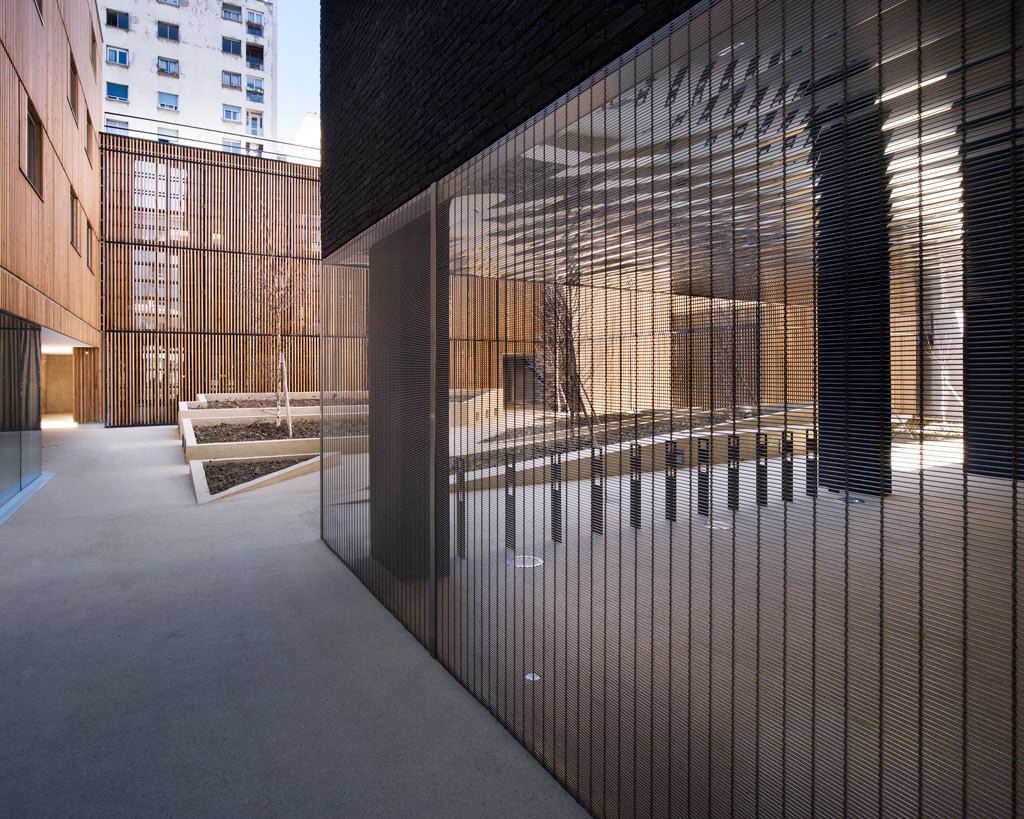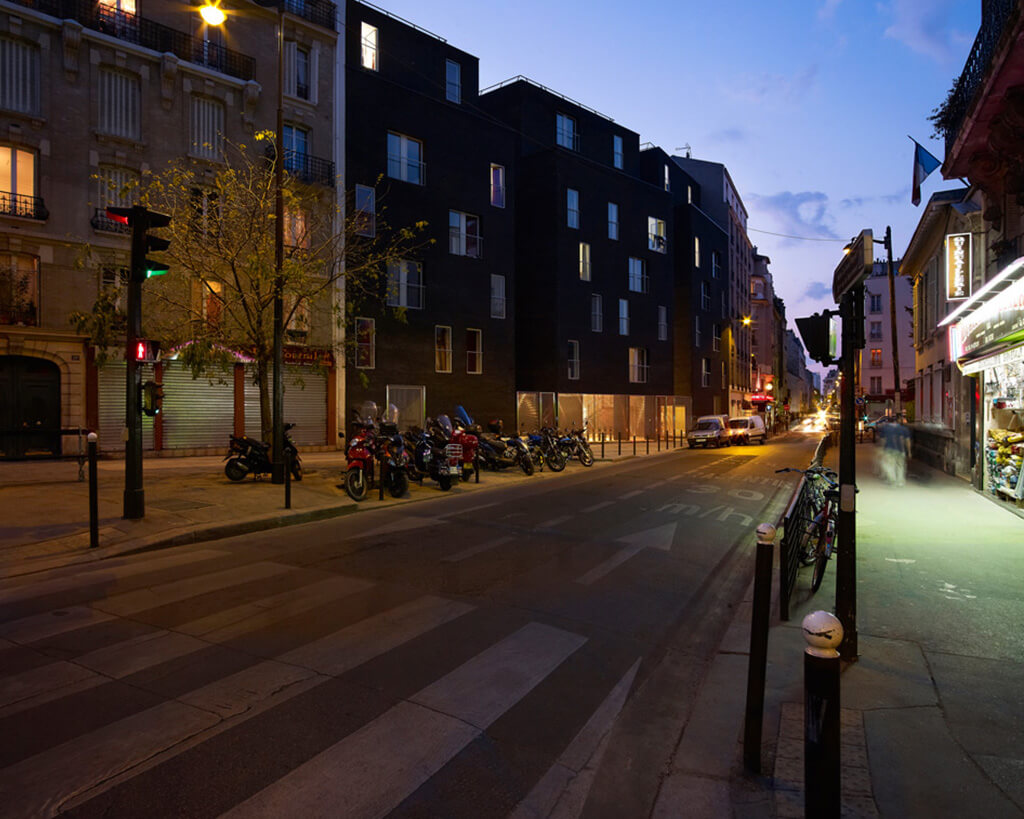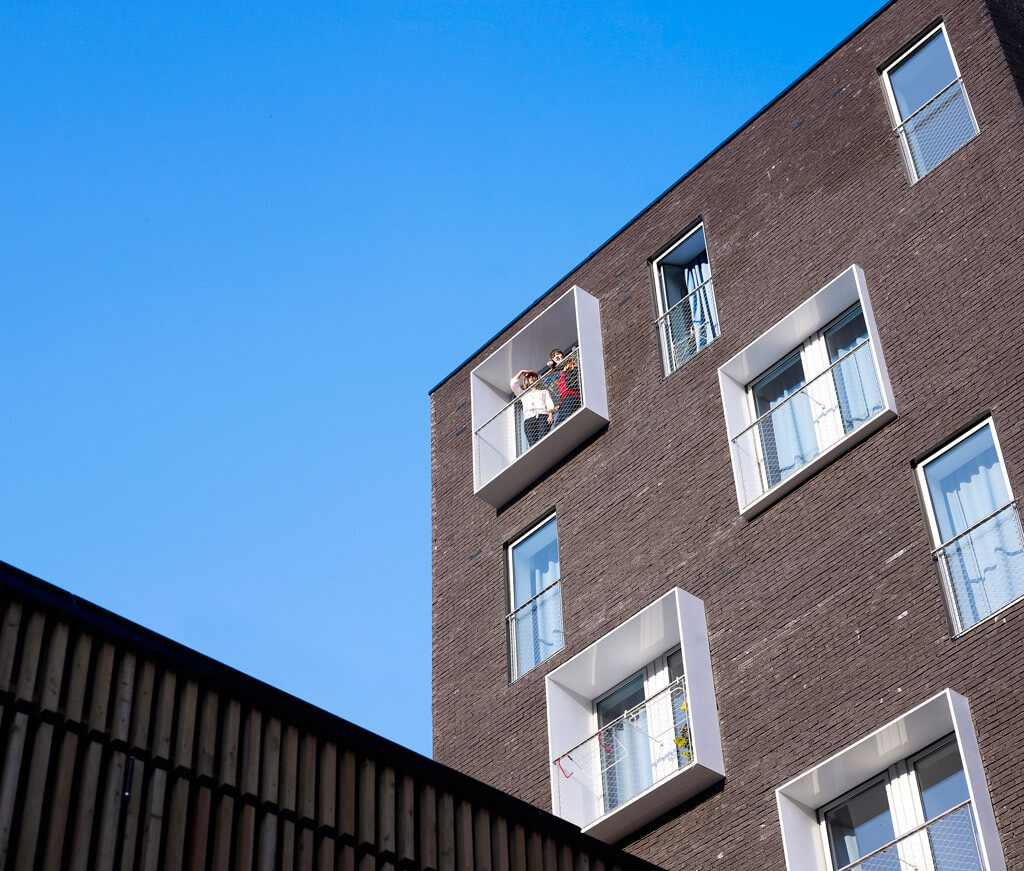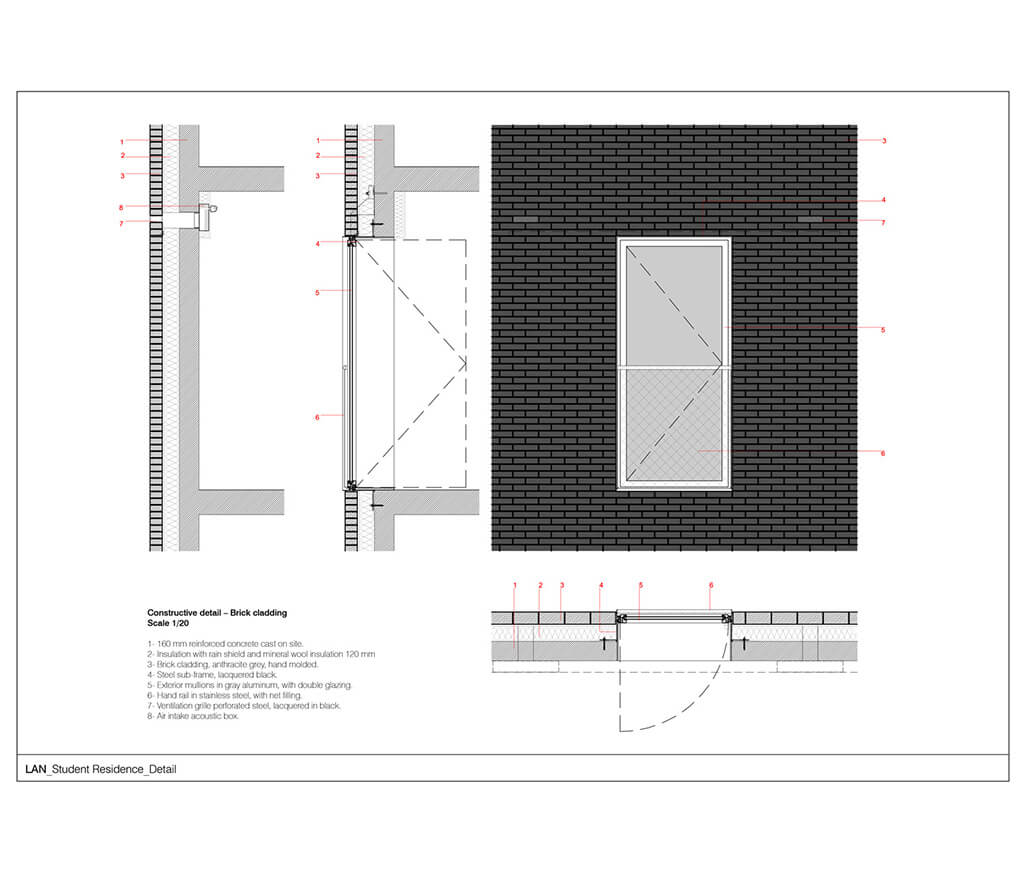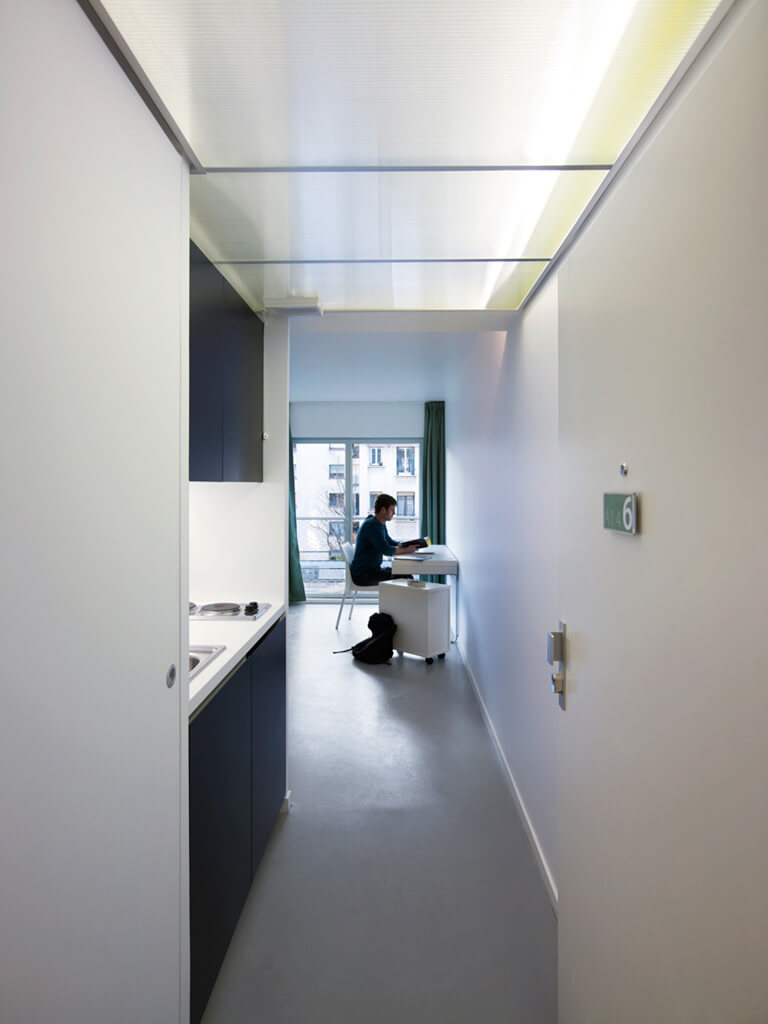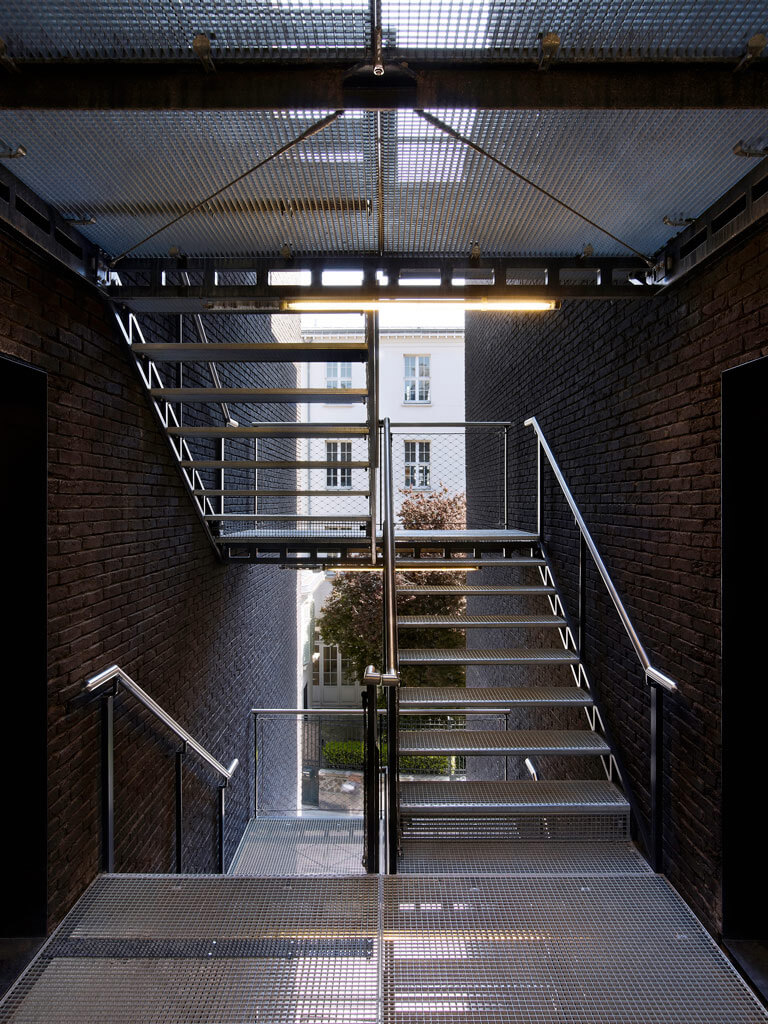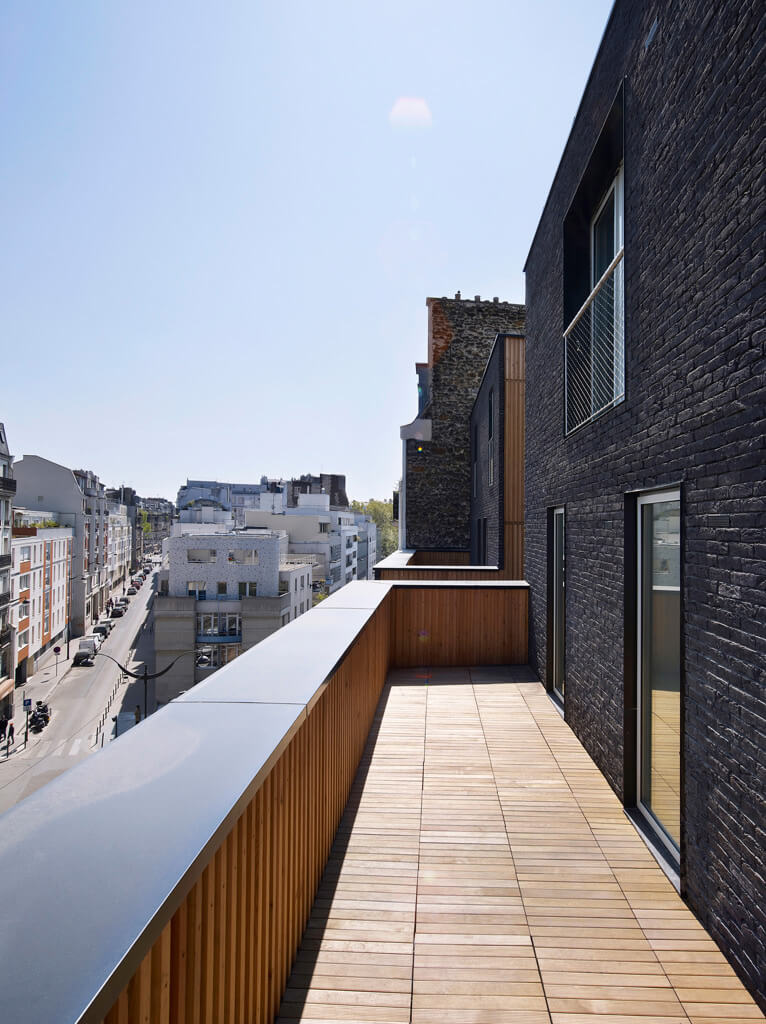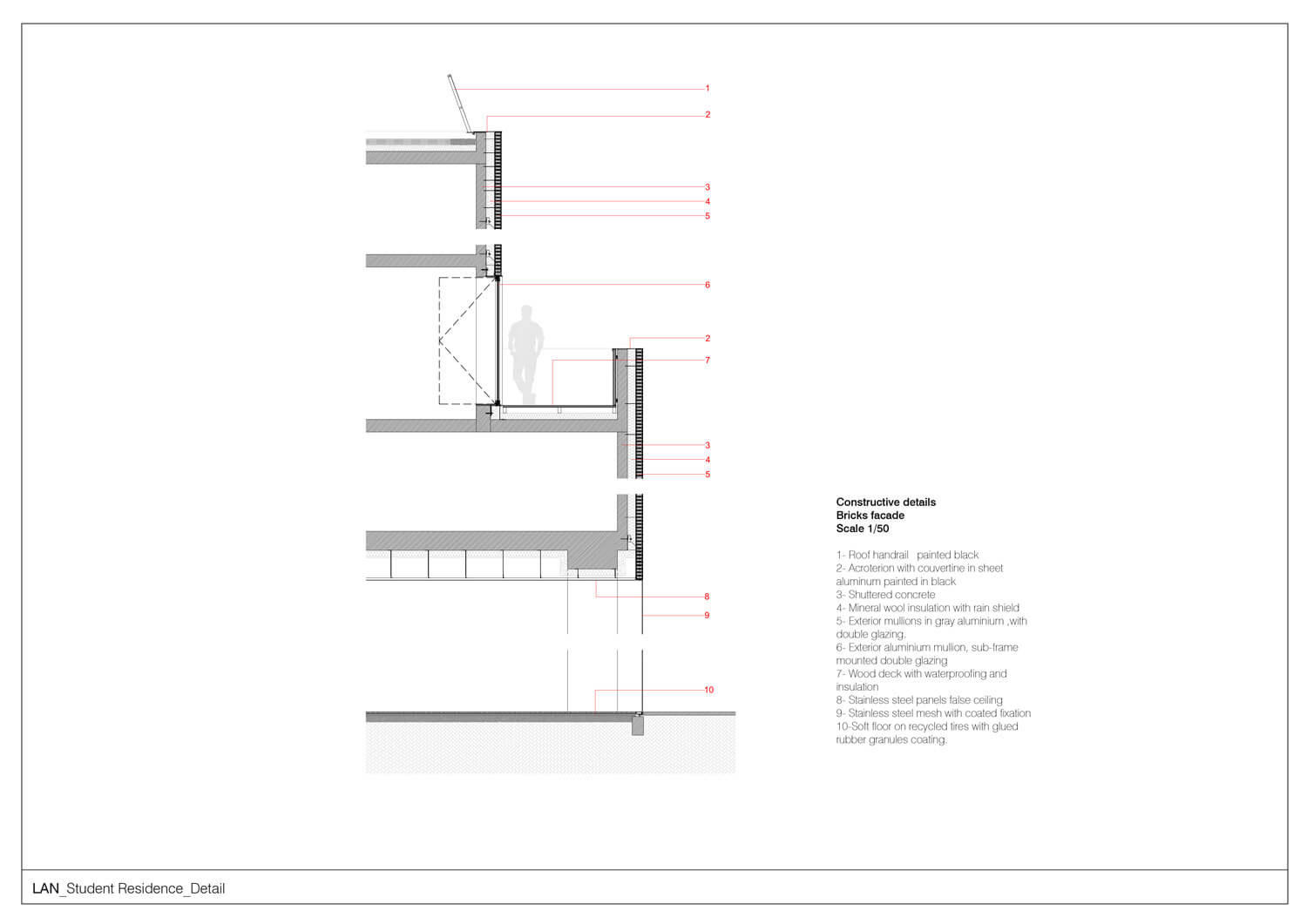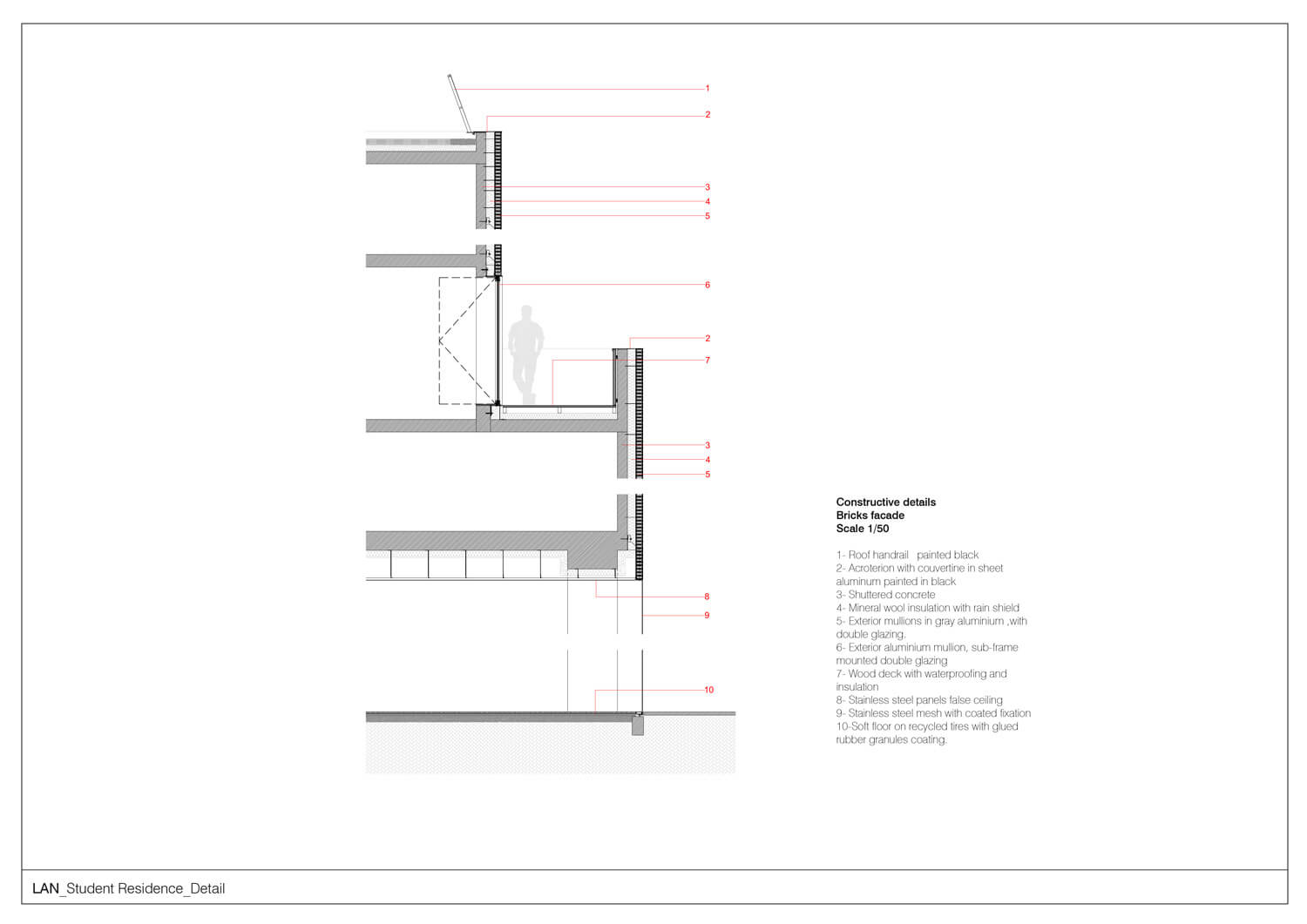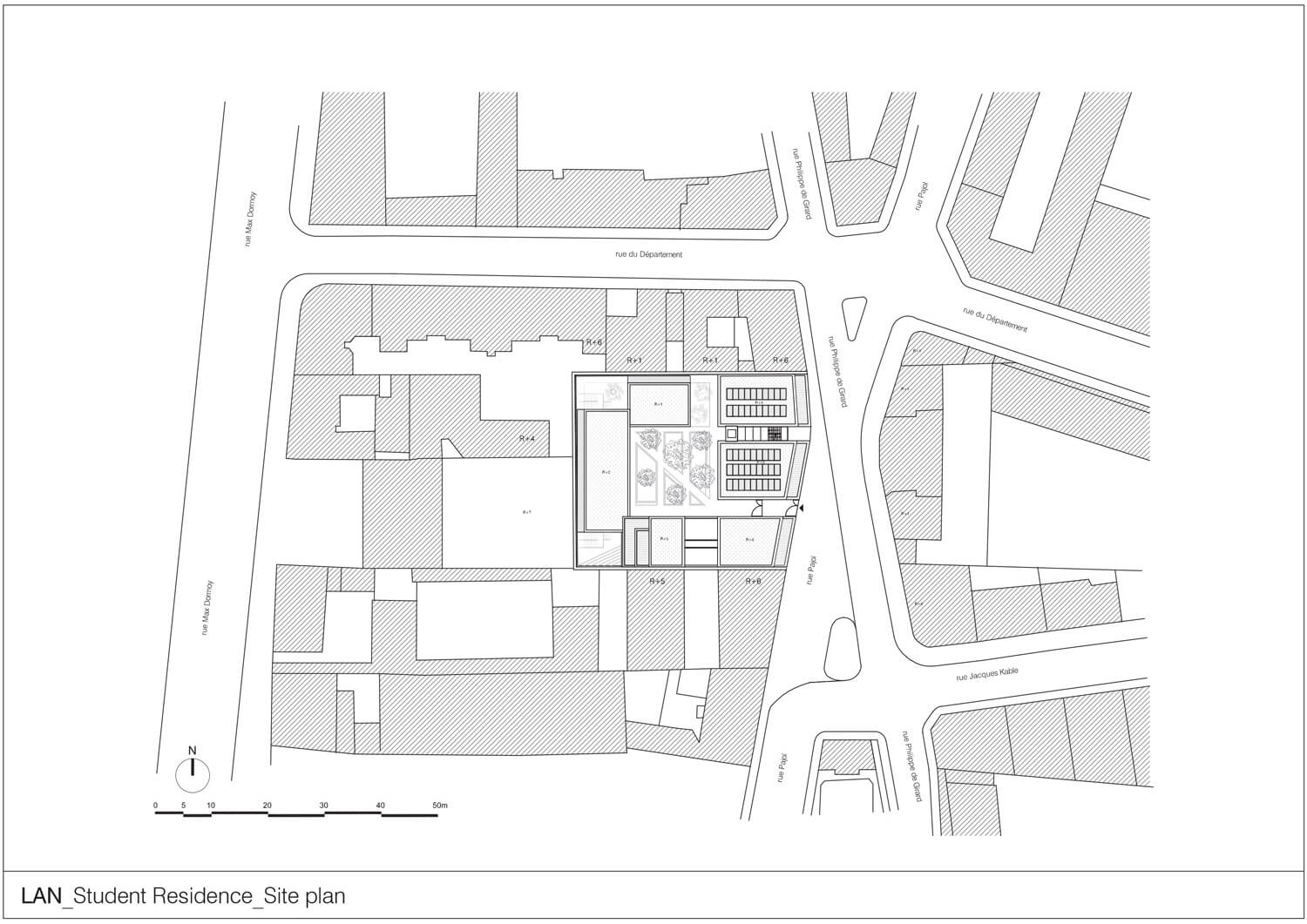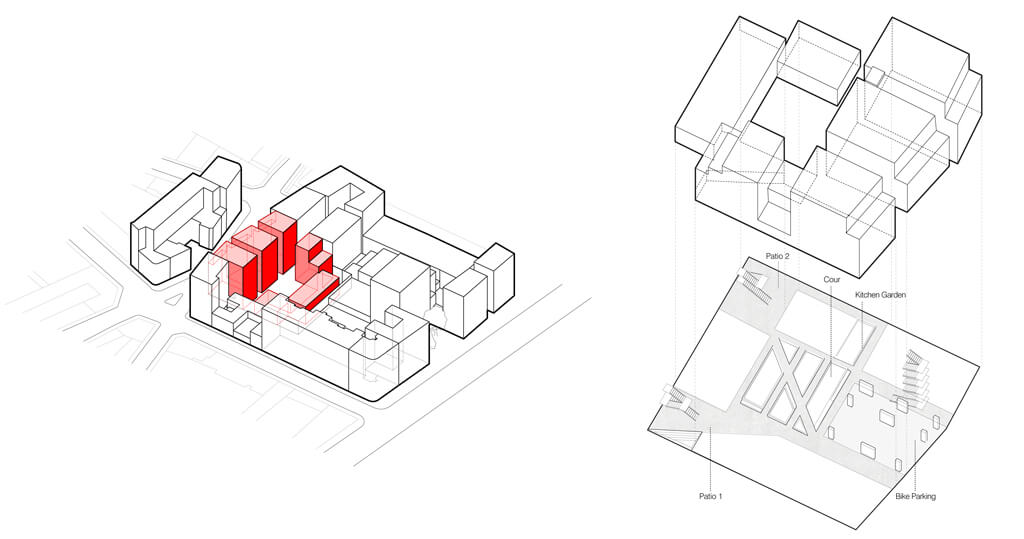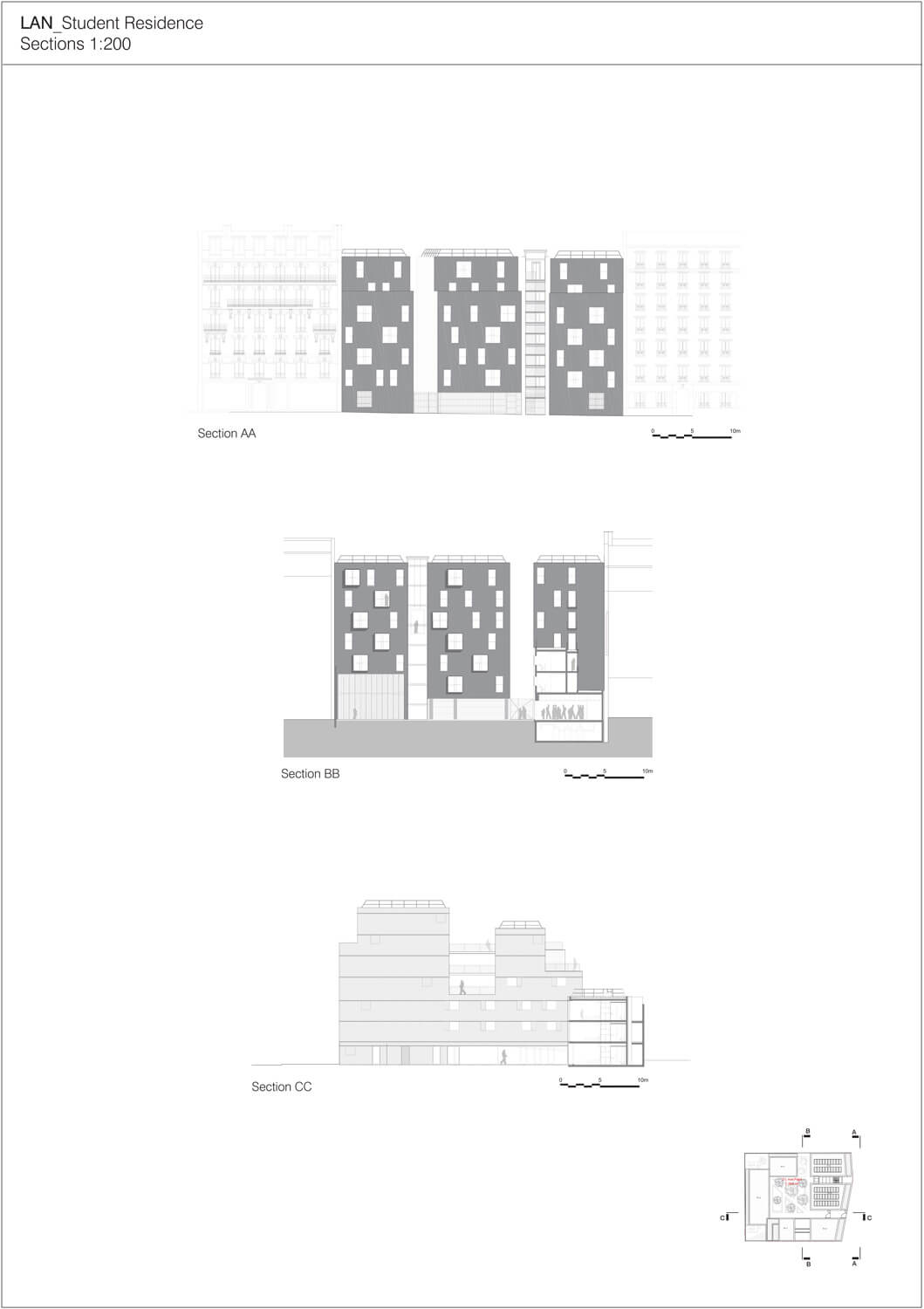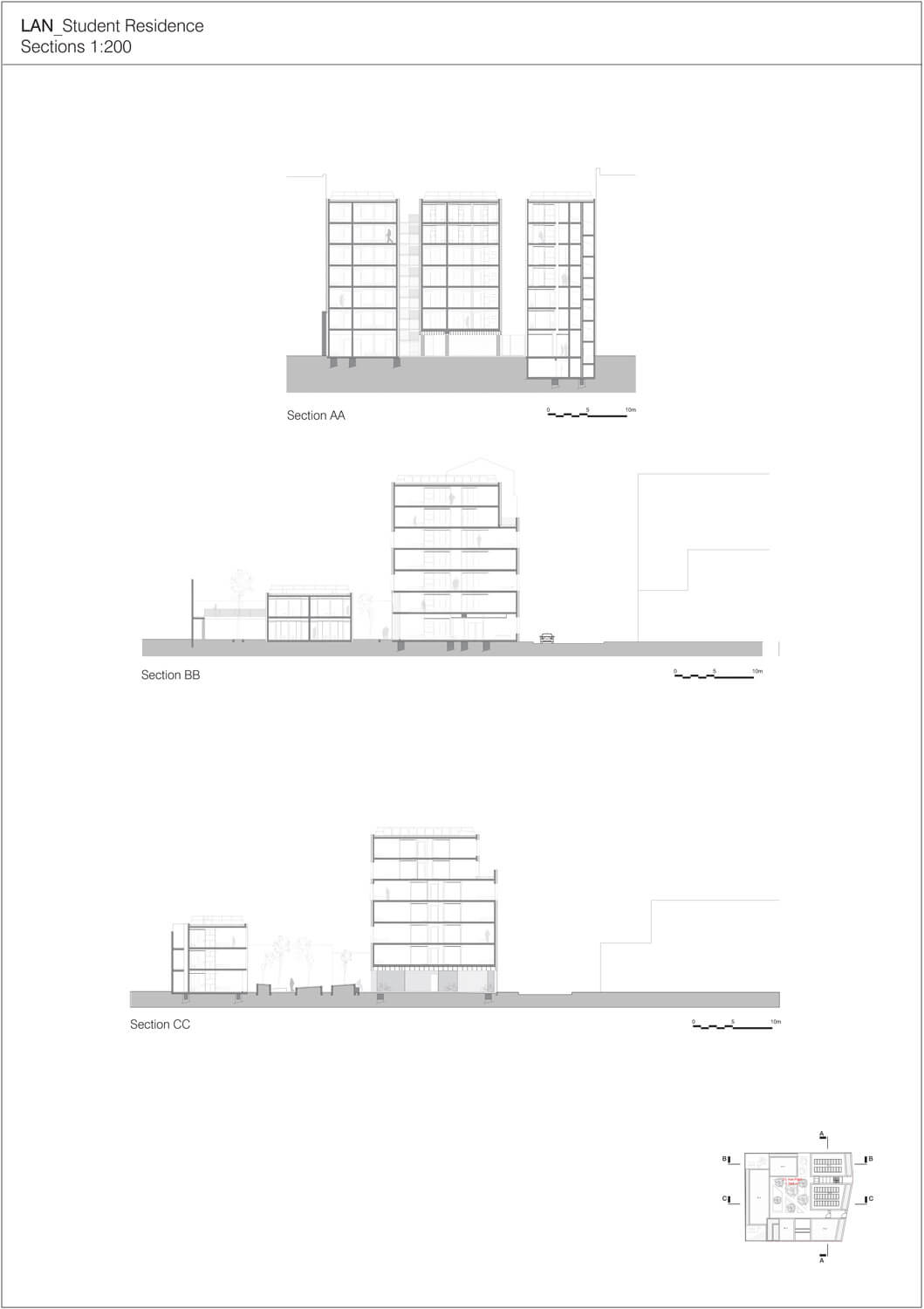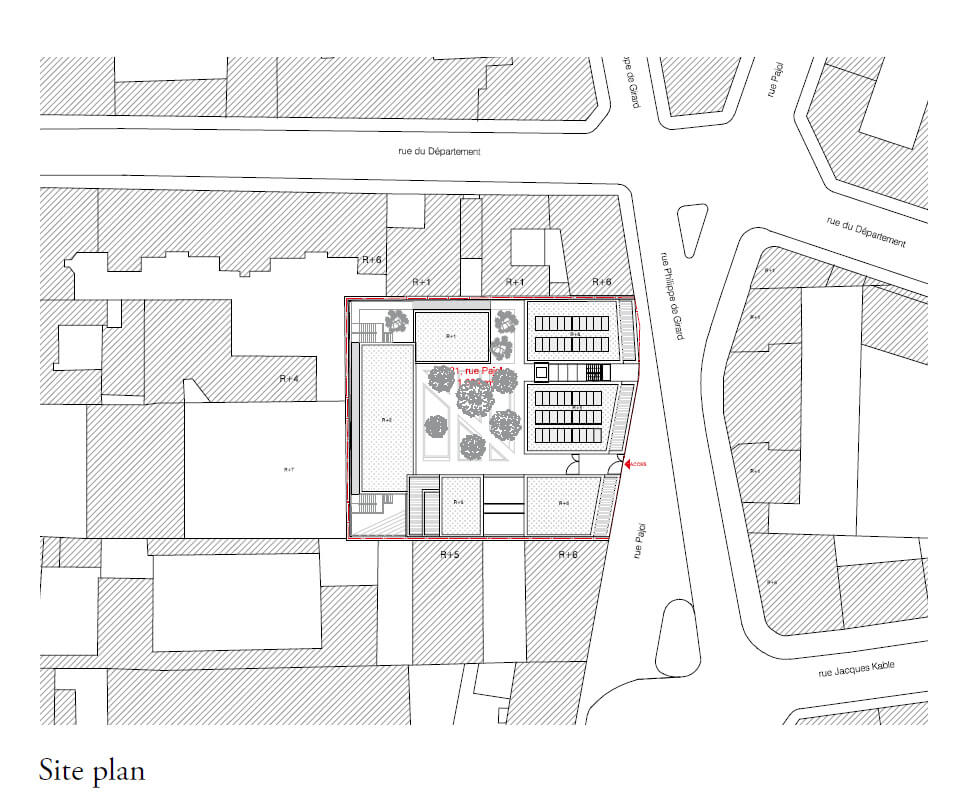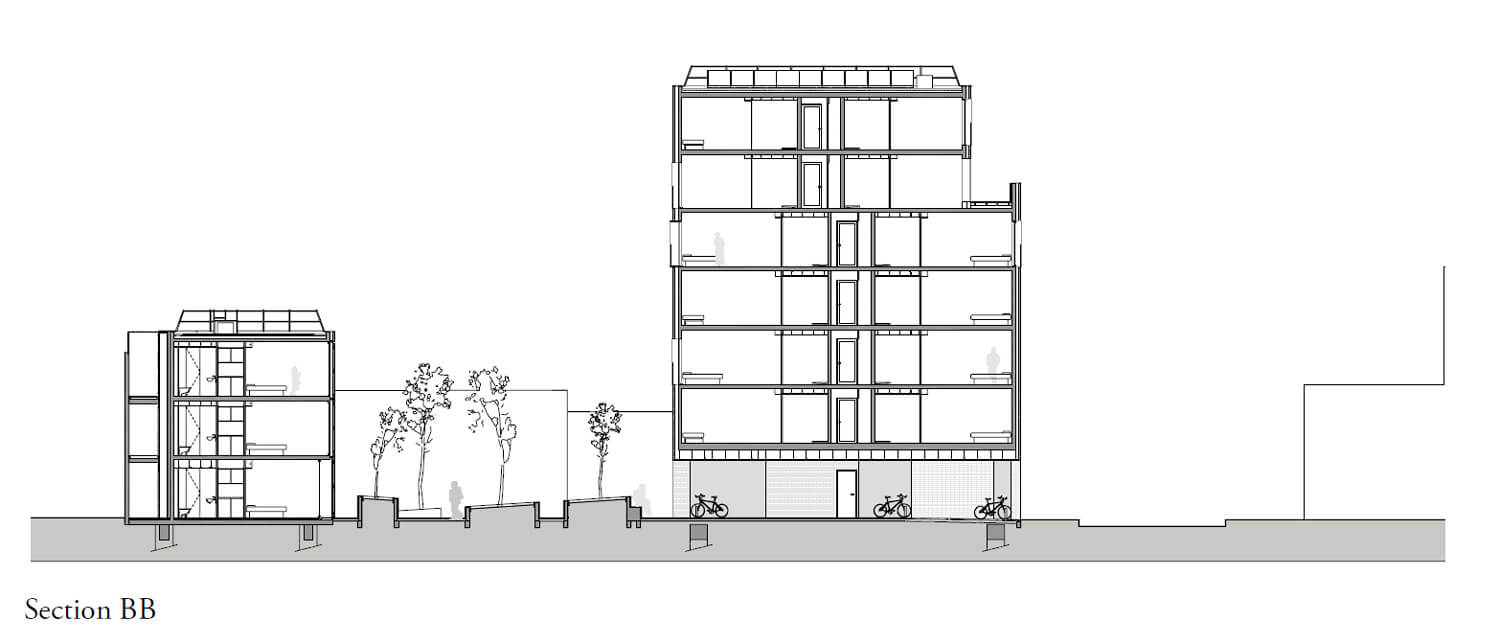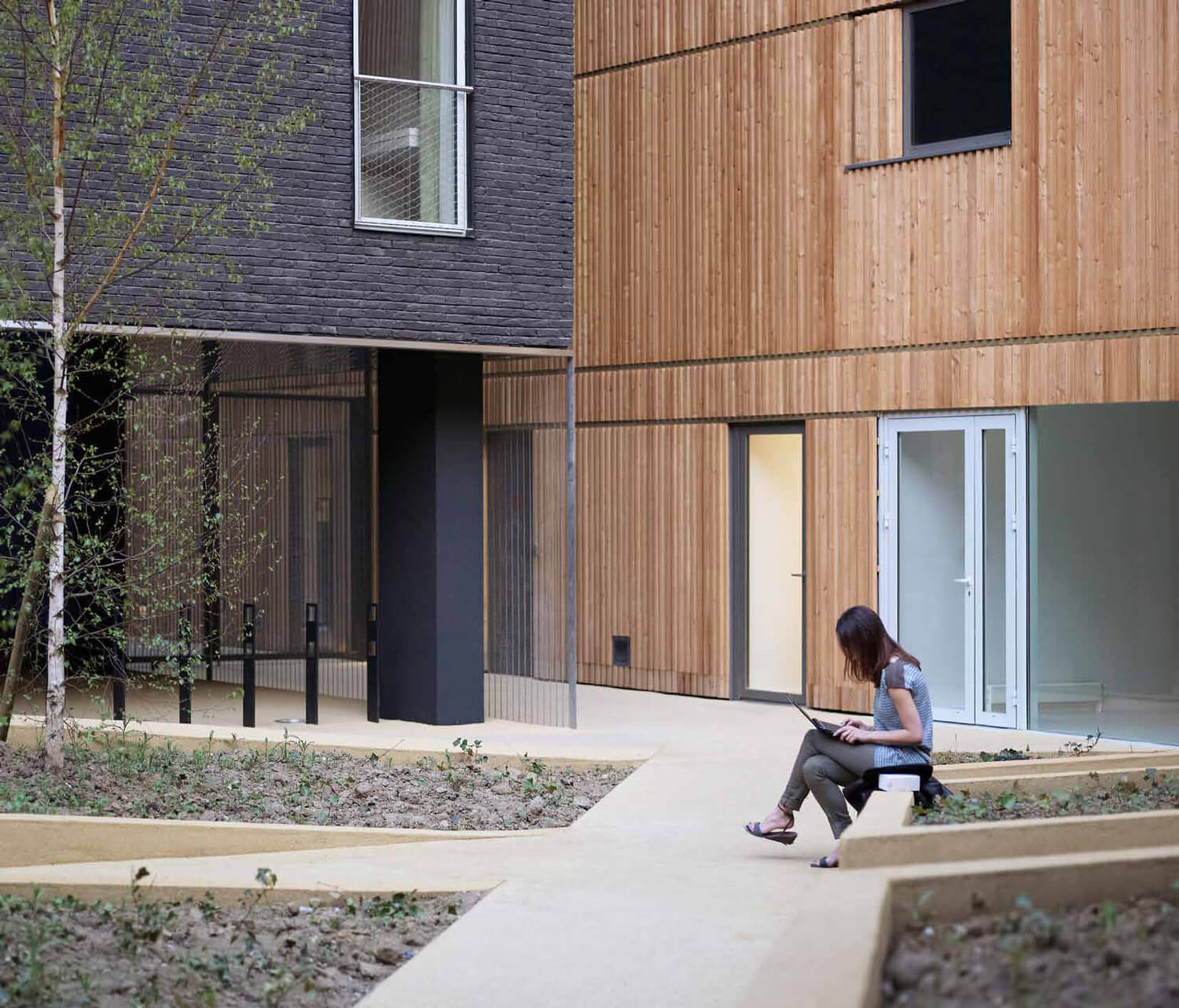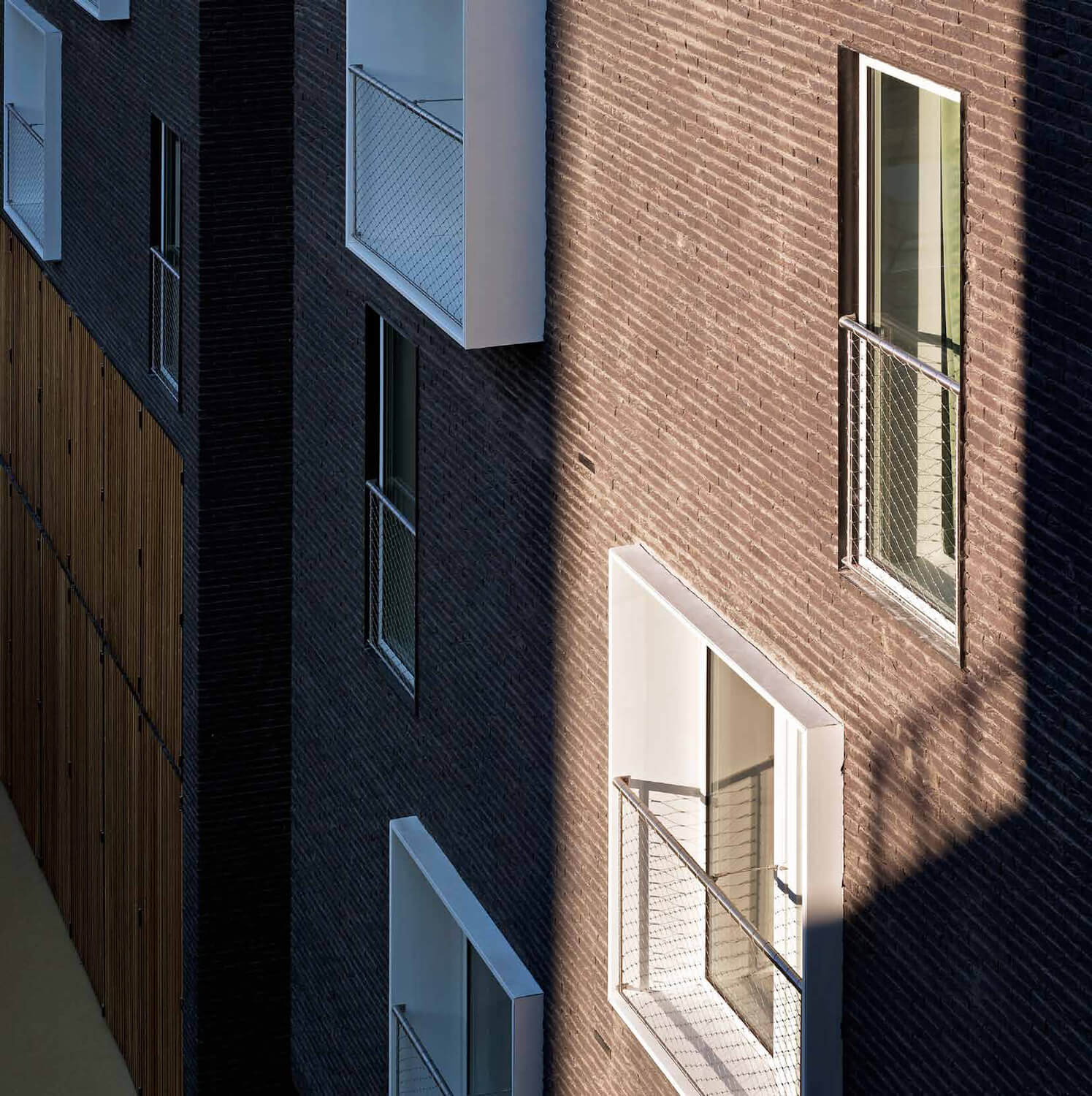Student Residence in Paris / LAN Architecture
Student Residence in Paris / LAN Architecture
Context
The project of the student residence integrates the urban fabric of La Chapelle’s district in Paris and acquires an important role in its evolution.
The plot
The plot is situated at the crossroad between rue Philippe de Girard and rue Pajol in the 18th arrondissement, close to the ZAC of Pajol, area that hosts an ambitious redevelopment of former railway yards, where social, cultural and sports amenities are currently being created. The district is composed by a very heterogeneous mixture of Haussmannian residential buildings, factories and workshops. Its intrinsic characteristic is therefore the richness and wide diversity of situations, unusual within Paris itself.
Street and the courtyard
The project is composed by several buildings, the volumes and voids they occupy depends on the surrounding context. On the street, three six-storey volumes are separated by two rifts providing access to the residence and vertical circulation. The heights of the buildings at the back of the plot vary according to the buildings nearby. In the middle, a spacious courtyard is illuminated by a rift in the south building, an extension of an existing void. The courtyard, the heart of the project, provides access to the various buildings and defines their interrelationship. This 15 x15 square metres space ensures sunlight for all the rooms and acts as a kind of green lung.
Materials
The intent in creating a duality between street and courtyard was pursued in the choice of materials. The facades, instead of imposing a single image on the project, participate in creating the varying atmospheres of the spaces they envelop and delimit. The buildings facing the street are clad in dark, slate-coloured brick. Instead, the buildings around the courtyard are clad with larch planking with folding louvred shutters in front of the windows and balconies, as is also the facade along the entry passage. All the ground and wall surfaces in the courtyard are dressed with the same lightcoloured, flexible material, normally used for sports areas and playgrounds. The choice of materials was dictated by technical and architectural concerns. Our research was guided by the desire of durability and the pursuit of a sober, refined and classical style for our project.
Circulations
Empty spaces in the courtyard and circulations could might be defined as ‘junkspaces’ as they are by-products of the design of the buildings. Our ambition was to restore the value of these spaces in aim to create a genuine ‘plus’ for the residents. The exterior spaces, interacting with the communal spaces and acting as a buffer between private spaces, are not merely set for circulation but provide also the conviviality our project seeks to create. The destination of those spaces is not specificated by the project so that their uses can be defined and developed by the residents.
Specifications
The brief specified the construction of a student residence of around 150 rooms, of communal spaces, administrative premises and a caretaker’s apartment, with RIVP acting as project manager for the CROUS, which will run the residence. As one enters the residence via the rift on the left, he afterwards discovers the reception spaces, the administrative premises (on the corner of the street and the passageway), the communal facilities and the study and leisure’s areas located around the courtyard. The 143 rooms are divided in three different typologies. Students’ furnished rooms have an average surface area of 18 m², including a bathroom and a kitchen area. The view of the courtyard provides a calm atmosphere suitable to concentration and study. The desks are always located near an outside view in order to take benefit from natural lighting. Ten rooms are specially designed for people with reduced mobility.
Energy performances
The project complies with the “Habitat and Environment” label’s VHEP specifications. A combination of compactness, treatment of the envelope, and solar heat coupled with high-performance ventilation and heating (urban heating and solar panels) creates a pleasant and comfortable accommodation. The concrete structure, insulated on the outside with 12 cm of mineral wool, brick or wood cladding and high-performance double-glazed fittings, provides efficient thermal insulation. In winter the buildings retain their interior heat, and in summer their exterior insulation reduces solar and internal overheating, while inertia enables the capture of daytime heat and its retention during the night.
Drawings
Continuity
Transparences
Section BB This communal space is related directly to the public space outside by the vertical rifts in the block on the
street side. The transparency this creates strengthens the link between the plot’s exterior and interior and attracts
attention to the activity in the courtyard.
Circulations
The circulation system is very legible: the four vertical circulations are located at the plot’s four corners. All circulations
are lit naturally so that the landings can act as meeting places.
Common Spaces
The exterior (common spaces) corridors retain an ambiguity with regards to their usage. They are infact conceived not
solely as distributors but rather as collective spaces where social gatherings could occur.
Bricks
The elevation facing the street is cladded with slate colored bricks. The nuance and the texture of the surface, as well as
the façade’s composition contribute to the over whole dynamic effect.
Extra info
Project:
construction of a 143-room student residence
Project manager:
RIVP
Budget:
8M € HT
Project area:
3,950 m²
Delivery:
February 2011
Team:
Franck Boutté (HEQ consultant), LGX Ingénierie (HVAC, main contractor)
Project leaders:
Sebastian Niemann, Venezia Ferret




